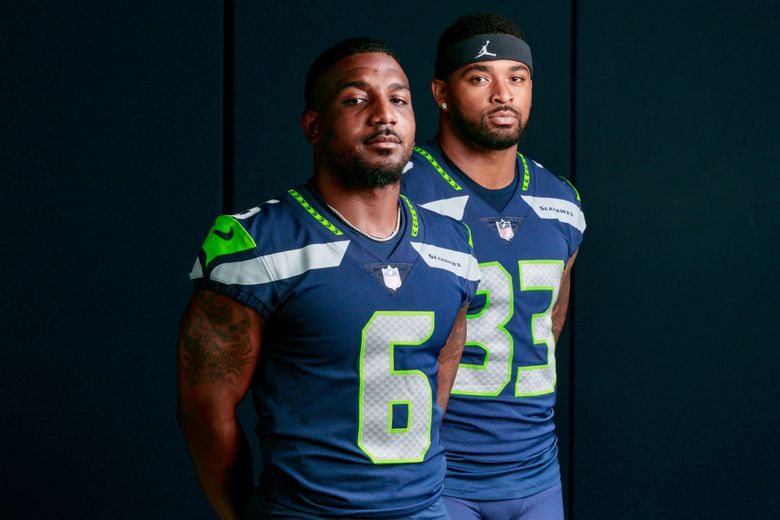We don’t know the outcome of this era of Russell Wilson-less Seahawks football. And as of now, it doesn’t have a clearly defined name, either.
The “Why’d You Leave Us, Russ?” era? The “No Time to Weep?” years? Just the “Post-LOB” era?
Whatever this era becomes, it will eventually add to the previous 46 years of Seahawks football, which can be separated into five pretty distinct periods.
The Wonder Years
Those who were there know how simply fun the early years were as the Seahawks posted the best record in expansion history (to that point) for any team in its second (5-9) and third (9-7) seasons, with Jim Zorn-to-Steve Largent becoming as ubiquitous a Seattle point of pride as the fish-throwing guys at Pike Place Market.
The high point: The Seahawks finished a game out of the playoffs in both 1978 and 1979 at 9-7, ranking in the top seven in points scored each year as Largent embarked on a Hall of Fame career that still has him at the top of many fans’ all-time list of favorite players.
The low point: The bottom fell out quickly in 1980, with nadir coming in a 51-7 loss at Dallas on Thanksgiving Day that year, still tied for the most points allowed in team history. Formerly popular coach Jack Patera was then fired at age 49 in the middle of a players strike in 1982 with a career record of 35-59. He would never coach again.
Good Luck With Ground Chuck
The Seahawks aggressively pursued Chuck Knox, who’d earned a reputation as a quick team rebuilder with the Rams and Buffalo, to replace Patera. He immediately proved worth it, leading the Seahawks to the AFC title game in 1983 and the franchise’s first four postseason appearances in the span of six years from ’83 to ’88, including a 12-4 record in 1984 that was the high-water mark of the first three decades.
The high point: A divisional playoff win at Miami on New Year’s Eve 1983 remains among the biggest moments in team history and got Seattle to the doorstep of the Super Bowl before a crushing loss to the Raiders, a team the Seahawks had beaten twice during the regular season.
The low point: There might be no lower point in team history than Aug. 30, 1988, the date when Ken Behring bought the team from the Nordstrom family. Knox stayed four more years to keep things respectable, but the writing that bad times were ahead seemed on the wall from Day One.
The Wayward ‘90s
The bottom dropped out on the Seahawks in 1992 with a 2-14 record and then the roof caved in on the Kingdome in 1994, which briefly had Behring trying to hustle the Seahawks to Southern California. NFL powers-that-be no more wanted the Seahawks there than did anyone in Seattle, and the team stayed put. Given all the off-field nonsense, just two winning records in the decade seemed fitting.
The high point: Paul Allen buying the team in 1997 and Mike Holmgren coming on as coach in 1999. There really wasn’t much else other than getting to watch Cortez Kennedy play every week.
The low point: Off the field, the trucks loading up for Beverly Hills (OK, Anaheim) on Feb. 2, 1996. On the field, the entire 1992 season … including that the Seahawks won the one game they shouldn’t have to fall to second in the draft and then were unable to get local hero Drew Bledsoe as the QB savior, instead consigned to Rick Mirer.
The Holmgren Revival
Allen hiring Holmgren following the 1998 season is when what feels like the modern era of Seahawks began. By 2002, the team had a new stadium and by 2005 had finally made a Super Bowl.
The high point: The win over Carolina to get to the Super Bowl was as big as any sports event in Seattle to that time, and the relatively comfortable lead throughout made it feel like one big, extended party.
The low point: Any of the four calls that went against the Seahawks in Detroit maybe? Maybe more pivotally for the future of the team was all that went into letting Steve Hutchinson walk after the 2005 season. That era, sadly, never seemed the same after that and felt like it came and went way too quickly.
Why Not Us? Meets LOB
Was it Russ? Was it the defense? Was it Marshawn? Was it “Always Compete?” Ultimately, who to credit most pales in comparison to what they did together, ushering in the franchise’s greatest run of success with one championship, two Super Bowl appearances and nine playoffs appearances from 2010-20.
The high point: Was it the first-play safety that glorious night in New Jersey? Kam’s early, game-turning hit? Malcolm Smith’s return? Percy Harvin’s return? The win was so shockingly dominant that it might in some ways have been a curse, creating an expectation of future success that was always going to be hard to fulfill.
The low point: How would the fates of the franchise, and maybe Wilson’s future with the team, been different if not for the gaffe in Glendale at the 1? What we do know is that not winning a second straight Super Bowl meant the Seahawks went from the ranks of being regarded as one of the most legendary teams in NFL history to a one-year wonder and a big “what might have been?”
